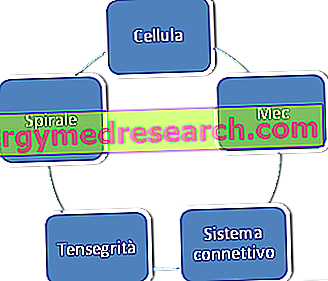The ability to regenerate the skin, as well as its barrier function against harmful substances, is determined by its components. The functionalities of these components are closely connected to each other.
Water content
The water present in the stratum corneum allows the functionality of enzymatic activities for the transformation of lipids and the production of NMF (natural hydration factor).

Sweat
Sweat is a solution of organic substances (urea, creatine, uric acid, ammonia) and inorganic (especially electrolytes) in water, which is the main component (99%). This secretion is produced by the sweat glands, eccrine glands that form at the twenty-eighth week of gestation and, although they are present in neonatal skin, it takes about two years before they become fully functional. Sweating allows the lowering of body temperature in the event of overheating (fever or intense physical exercise), becomes part of the components of the hydrolipidic film and protects the skin from bacterial and fungal aggression, since it has an acid pH (4-6, 5). Due to the limited functioning of the sweat glands, for the child younger than two years there is a greater danger of "overheating", compared to the adult, in certain physical health conditions (fever) or environmental (summer heat); the risk of heat stroke and severe dehydration is high. Moreover, the scarce secretion of sweat helps to weaken the skin, because substances with antimicrobial activity are also contained in the sweat, consequently a reduction of the secretion results in a greater vulnerability to microbial attacks.
NMF (Natural Moisturizing Factor)
The level of skin hydration is important with regard to skin enzymatic activity. The presence of NMF made up of amino acids, sugars, ions and hygroscopic molecules derived from the maturation of corneocytes is necessary to retain water and keep the skin hydrated. The skin of the newborn (3-12 months) has a lower NMF concentration than that found in the adult's skin. However, the baby's skin is more hydrated than the adult's skin. The motivation is to be found in the particular structure of the child's skin in the first years of life (the dense micro-grid traps a greater amount of water).
Lipid content
Intracellular lipids are important regulators of hydration of the stratum corneum and of the barrier function of the skin. After birth, under the influence of maternal hormones (eventually transmitted also through breastfeeding), the sebaceous glands remain rather active and productive up to more or less the three months of the child's life, during which the entity and quality of secreted fats is even almost equal to that present in adults. The mother's transmission of androgen hormones causes hypersecretion of the sebaceous glands in the newborn, and this phenomenon continues until the third month of life. From the age of three months the sebum secretion is reduced and then reactivated during puberty. In this broad period of time, in most cases the baby's skin tends to dryness and dehydration as a direct consequence of the modest presence of cutaneous fats, a clear sign of a not yet well developed skin barrier. Despite a low lipid concentration, the skin of the newborn contains, however, higher levels of water than that of the adult.
Melanin content
melanin synthesized in melanosomes present in melanocytes plays a photoprotective role in relation to the skin. In the first years of life the baby's skin has a low concentration of this pigment compared to the adult's skin. This helps to make this type of skin more susceptible to damage caused by solar radiation. Poor sun exposure or sunburn acquired during childhood can lead to the risk of developing malignant skin tumors in adulthood.
Skin microflora
The skin of the fetus originates in the mother's womb in perfectly sterile conditions. After birth, the skin surface is no longer sterile and aseptic, but inhabited and colonized by a wide range of microbial strains. By convention the skin bacterial flora is divided into "transient or contaminating" and "resident or permanent". Microbes permanently residing on the skin are one of the main means of resistance to infection. The integrity of the skin barrier, the physiological acid pH, the continuous desquamation of the stratum corneum and the particular composition of sebum and sweat together with the resident skin flora have the important task of hindering the attack and colonization of the skin by germs pathogens. The skin surface, far from that of the child, is not a sterile surface but inhabited by a complex of microorganisms very useful for maintaining its well-being.



